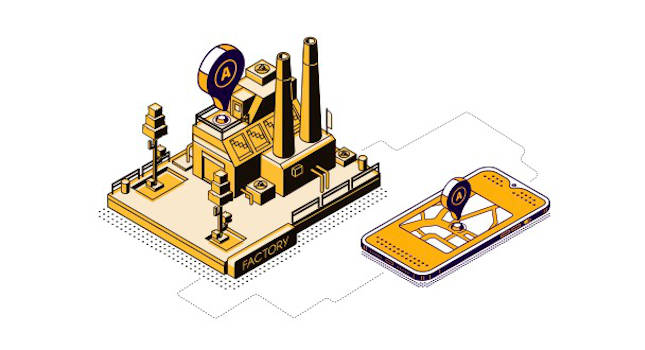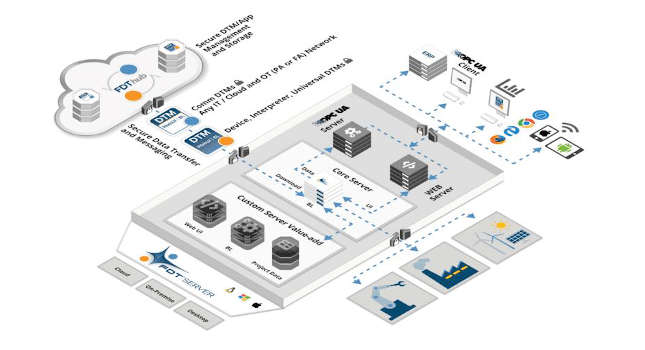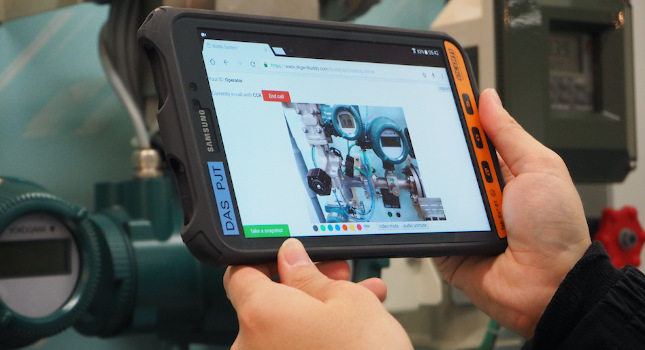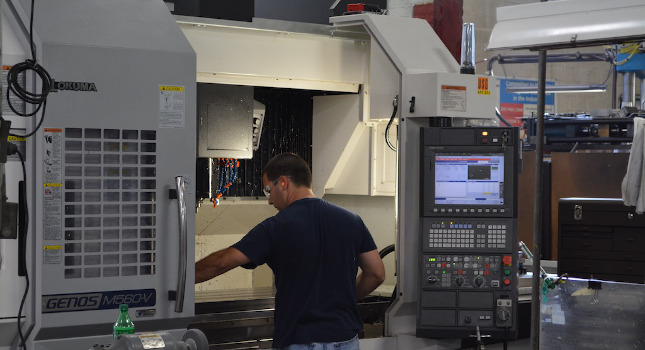Since the invention of the cellular mobile network by AT&T Bell Labs in the 1970s, the demand to provide voice communications to anyone, anywhere, at anytime has increased, with an explosion in consumer-level products during the past decade. The installed mobile phone base is approaching 1 billion, and soon the number of mobile phones will exceed hard-wired ones.
|
Since the invention of the cellular mobile network by AT&T Bell Labs in the 1970s, the demand to provide voice communications to anyone, anywhere, at anytime has increased, with an explosion in consumer-level products during the past decade.
The installed mobile phone base is approaching 1 billion, and soon the number of mobile phones will exceed hard-wired ones.
This enormous commercial success has spawned new areas of wireless communication applications. There are significant advancements in these applications, causing a revolution in plant floor operations.
When the term “factory floor wireless communications” is mentioned, quite often the first image that comes to mind is the “connection” systems available to tie equipment together on the plant floor. Technologies such as Wireless LAN, AirPort, and Bluetooth are designed to connect PCs and devices to local area networks (LANs).
In the case of Bluetooth, the 2.4-GHz radio frequency transmission system delivering 1 Mbits/sec is attempting to replace wired communications for serial and parallel devices, all the way up to internet connections and phone hookups. Say goodbye to cables, as these newer technologies rapidly become a reality.
While these applications are powerful uses of wireless technologies, this article goes beyond “cable replacement.” It focuses on the use of two more significant wireless device applications: wireless applications protocol (WAP) enabled cellular phones (also known as web-enabled mini-browser cell phones) and personal digital assistants (PDAs) working with plant floor information.
Wireless background
For devices to interact, they must work with a communications standard. AT&T created the first-generation cellular communications protocol, known as time division multiplex access (TDMA). This service is the “analog” method for cellular phones to connect with the voice network.
The primary disadvantages are that conversations can easily be intercepted, connectivity suffers from gaps in coverage, and transmission is often poor. While sufficient for talking with your family, this method does not offer the reliability or security required for exchanging critical industrial or business communications, as is the case with most plant floor data.
The development of digital standards opened a new level of security with the possibilities of advanced data applications. The first move from analog to digital was global systems for mobile (GSM), developed by the French and considered second-generation technology. GSM is used by 400 million people in more than 150 countries, and is currently the prevalent standard for mobile communications in the world.
While GSM is extremely popular around the globe, there are only 3 million U.S. users. Unlike in Europe, where GSM is the only standard, in the U.S. there are several competing standards, including personal communications service (PCS). However, the switch from current U.S. standards to GSM and beyond is an eventuality that few can deny.
Third-generation (3G) is the next emerging standard. As this new standard evolves, video-on-demand, high-speed multimedia, and internet access are just a few of the projected services. The main benefit of 3G systems is that they offer high-end capabilities, which include enhanced capacity, quality, and data transmission rates that are currently unavailable with other standards. In essence, 3G systems are based on 2G infrastructure and services, but offer a new radio interface.
There will be a period in which 2G and 3G systems coexist. The current mobile system will continue to operate temporarily, but to take advantage of 3G services, the user will eventually need to upgrade.
More than voice
Cellular phones are very popular, even dominant, in some countries. For example, penetration of cell phones in Sweden and Finland is 85%. However, their use for more than just voice communications is still in its infancy.
The number of users exploiting the digital features is low in the U.S., with a current installed base of about 2 million (just 1.3%). However, this segment is growing very quickly, and is projected to reach 100 million by the year 2005. Europe offers a similar story, with this number expected to grow from the current 10 million to about 200 million by 2005.
Besides the more “passive” digital features offered, such as making a cell phone act like an alphanumeric pager, one of the more exciting technologies is the integration of web browsing into these phones.
Web makes wireless wonderful
Web-enabled mobile phones use a technology called the wireless applications protocol (WAP). When using a WAP phone (also known as a mini-browser) to connect to the internet, a special set of web pages are accessed.
Instead of viewing the more common hypertext markup language (HTML) pages, a more streamlined set of small, lightweight web pages are viewed, using wireless markup language (WML). These WML are pages specifically designed to deliver content to fit into the mini-browser mobile web-enabled phones.
Security features for WAP phones are similar to those in use today when using a PC web browser to make a secure transaction. Basically, all communications are secured using IP security encryption and secure sockets layer (SSL) standards.
Much of what is possible over the web is accessible now using WAP phones. Users can trade stocks, purchase airline tickets, get the latest news, research stock quotes, check up on the weather forecast, and more. All that is required is that you know the WML server offering such services.
It is the exploitation of WAP phone technology (interaction with equipment to bring about information and control) that offers a tremendous opportunity for the plant floor.
Using mobile phones in a plant environment
Don’t be fooled by the WAP web-enabled phone’s small size. With the right software implementation, these phones pack a powerful punch. Categories of applications for use in manufacturing plants include:
-
Facilities and plant monitoring
-
Plant dispatching and scheduling
-
Access to data logged to Oracle, Excel, and Access databases
-
Real-time monitoring from remote locations
-
Machine downtime monitoring
-
Building automation systems controls
-
Remote notification and messaging
-
Remote alarming
-
E-mail
-
Network monitoring
-
Connection to ERP and supply chains.
-
To create these applications, connections to WML servers offering this level of information is required. HMI/SCADA vendors are working toward having mobile versions of their industrial software available for this purpose as well.
For example, some currently available software packages offer plant personnel access to live data, set-point changes, alarm information, data trends, database records, and other information. Also possible is communication with factory floor networks using OLE for process control (OPC). To help solidify this concept, a quick walk-through example of an interactive session is shown in Figures 1 through 8.
By using a WAP phone, plant floor personnel have access to critical information wherever they may be, and can take corrective action in a timely manner.
Pocket PC — mobile and wireless
The other major wireless innovation invading the plant floor is the personal digital assistant (PDA). Windows CE has enjoyed huge success with the Microsoft Pocket PC platform, taking wireless capabilities for handheld devices to a new level.
Besides the obvious access to “pocket-sized” applications for Word, Excel, Access, Internet Explorer, and the like, HMI/SCADA applications are also being designed to run on these small, mobile devices. Figure 9 shows a handheld device running an HMI application integrated with live OPC data.
These small devices integrate with the enterprise in ways only thought possible with larger notebooks and desktop computers. Not only can they be an extension of the enterprise-level workstations, these “fit-in-your-pocket” devices can also communicate directly with plant equipment.
Instead of being chained to a computer terminal, plant engineers and automation professionals now enjoy a new tool that offers greater mobility (hence making workers more productive), while maintaining the ability to monitor the integration of real-time data, alarm, and historical information in everyday plant operations. With the array of wireless communication methods available to CE devices, being kept informed and remaining mobile are no longer mutually exclusive.
Merging wireless PDAs and WAP phones
Recent developments have been announced offering the marriage of Palms and Pocket PCs to the mobile phone technologies. These advancements will make the use of wireless devices explode in the near future.
Microsoft has been working on its next generation Pocket PC product family based on a new technology it calls “Stinger.” This technology integrates the best of the mobile phone features with the Pocket PC (PDA), allowing for the creation of applications that can deliver plant information to any device, anywhere, at anytime.
To achieve this technological feat, Microsoft has employed several key internet and server technologies that allow the efficient delivery of all of this standards-based information, thus condensing the pager, mobile phone, and pocket PC into one single device. This new technology will create a new level of capability in mobility and flexibility.
Conclusion
Digital mobile phones and PDA devices are here to stay. With each passing month, they become more powerful, and the software tools that run on them are continually evolving.
It is up to the facilities, maintenance, and plant engineers to empower their workforces with these devices, ensuring they have the tools needed to be productive.
It appears the wireless mobile revolution is on.
— Edited by Jack Smith, Senior Editor, 630-288-8783, [email protected]
More Info The authors can be reached at [email protected] and [email protected] . For more information on this topic, visit microsoft.com/mobile/ and iconics.com .



